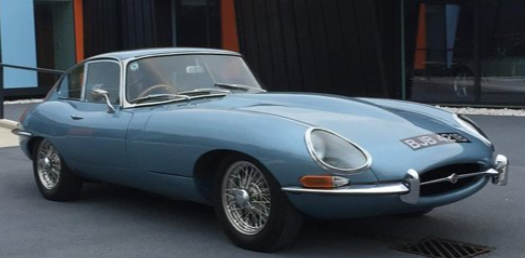When buying a Jaguar E-type, the first concern should always be for the rust. Fact, no Jaguar E-type`s series 1 cars were ever galvanized, also very few were ever undersealed leaving the factory. So many cars have made the journey across vast oceans in their time, thus being exposed to the salty sea air. Any surface rust is going to be very easy to spot, however it’s critical that you dig much deeper, just to make quite sure you are not going to buy a pup. The floor pans are very prone to some rust in the early cars, so do make sure that you do lift up the carpets, check for the corrosion as well as any signs of any welding that`s taken place. Sure you need to look for any fresh looking paint, and any signs of a recent repair. The outer sills, they are a very weak point, and this might indicate that further rot could be to the inner door sills, now that`s a very expensive job. You best take a magnet along with you, you`ll need this checking for signs of any filler, mostly around the wheel arches, the door sills and the light surrounds. This isn`t going to tell the whole story, this is because some body fillers actually have quite high metal content.
The bodywork and of course the paintwork is by far the desirable quality in a decent Jaguar E-type. The panels must be perfect fit, and the finish ought to be very good. Any less will seriously hit the value. Jaguar E-type buyers will be prepared to pay, they want the best, and will not touch rubbish. Jaguar E-type restoration costs are like phone numbers, they can be astronomical. The bulk of it will be putting right shoddy bodywork. If you look and see the car needs body and paint, then you need to walk away, unless you`ve very deep pockets; you`ll never make the money back that you`ll have to spend.
With Jaguar E-type`s originality is king, that`s it! None more than with early Series 1 Jaguar E-type`s. Now, if buying to invest, you best make sure that any replacement parts are top quality. The engine and the chassis numbers need to match, insist on comprehensive history, a file that has details any work that`s been carried out in the past. But despite this don’t get put off by some professionally fitted improvements, like brake kits and a five-speed gearbox. The buyers will pay for modifications that will improve the Jaguar E-type driving experience.
The early Jaguar cars shared the same 3.8 litre engine as the XK 150 that it replaced. It`s a very well proven engine, it`ll easily cover some 150,000 miles, if well maintained though it`s going to eventually need a total rebuild. Starting the car from cold, listen for rattling and or knocking noises, along with any white smoke from the exhaust will mean that a full engine rebuild is on the cards. You need to check that the oil pressure is about 40psi, and check that the radiator cooling fan cuts in quickly. If this doesn’t happen, then keep an eye on the engine temperature gauge, it might be a sign of overheating. Also check for the dreaded mayonnaise inside the oil filler cap, as well as the water reservoir for any oil. Both these signs indicate that a blown head-gasket and some costly repairs.
The electrics are pretty simple in the Jaguar E-type, but it could be an absolute nightmare to put right someone else’s mess. The older restorations are going to have much older wiring, so this may perish and short out. Electrical gremlins are very difficult and mostly expensive to trace, unless you`re an auto electrician. Make sure that absolutely everything electrical actually works. Just test everything!
The 3.8-litre cars were fitted with a 4-speed manual Moss gearbox; this is renowned to be a complete pain in the arse. But don’t be put off noise with a reluctance to go into gear; they are all like that, but you`ll eventually get the hang of it. A rebuilt box will cost about £1000. Now a loud whining noise at the rear could be a worn differential, and any clunking noises could suggest some worn universal joints.

